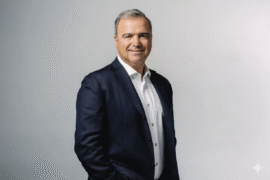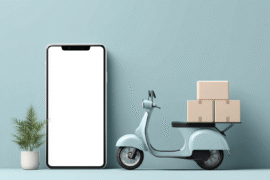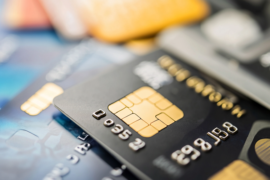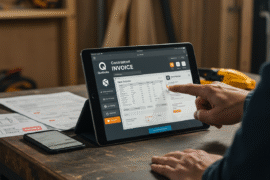This article may contain references to products or services from one or more of our advertisers or partners. We may receive compensation when you click on links to those products or services. Nonetheless, our opinions are our own.
The information presented in this article is accurate to the best of our knowledge at the time of publication. However, information is subject to change, and no guarantees are made about the continued accuracy or completeness of this content after its publication date.
When managing your money, living frugally can help you save more and feel secure about your future. But what does being frugal mean? It’s not just about saving every cent; it’s about making smart choices that fit your values and goals. Knowing the common mistakes can improve your spending and create habits that help your financial health. Whether you want to save for a dream trip, pay off bills, or have money set aside for emergencies, these tips will lead you to a better and more rewarding way of living.
Understanding the Mindset of Frugal Living
Living a simple lifestyle is not just about saving money; it’s a way of thinking that values what is important. People who live this way know that every dollar should be used wisely. They focus on getting the most from their money. They practice being aware of their spending, checking how their choices affect them over time, instead of wanting quick rewards. This better grasp of buying habits helps them avoid the usual mistakes that cost too much.
Adopting a simple and careful way of thinking means seeing the value of being patient and disciplined. People who practice frugality do not give in to flashy marketing or trends that promise quick fixes. Instead, they focus on:
- Making a practical budget
- Choosing quality instead of quantity
- Looking into do-it-yourself options
- Appreciating experiences more than possessions
These principles guide their money choices. They help create a lasting life that focuses on stability and safety.
Avoiding Impulse Purchases for a Healthier Budget
One of the best ways to have a healthier budget is to consider how you spend your money. Set a time to pause before buying things that you don’t need. Wait 24 to 48 hours before you decide to buy something you want. This practice helps you see if it will truly bring value to your life or if it is just a passing wish. You can also make a list of things you want to buy later. This way, you can keep track of your desires without feeling rushed to buy them immediately.
Also, find out what makes you want to buy things on a whim and try to reduce those triggers. These triggers could be shopping with friends who spend a lot, checking online sales too often, or feeling stressed or bored. Here are some tips to think about:
- Unsubscribe from promotional emails or unfollow brands on social media to feel less tempted.
- Use cash or a prepaid card to buy things you want, so you will not spend too much.
- Find other activities that bring you happiness or success without shopping.
| Impulse Triggers | Alternative Actions |
|---|---|
| Emotional Shopping | Engage in physical activities or hobbies |
| Peer Pressure | Plan budget-friendly outings |
| Online Sales | Limit browsing days to once a week |
Using these methods can lower the urge to make fast purchases. This will help your overall financial health and strengthen your budget. Remember, it’s about making progress, not being perfect. Each small change can lead to a safer financial future.
Choosing Quality Over Quantity in Your Purchases
When trying to save money, it can be easy to go after the best deals. But not all products are the same. Paying attention to quality can improve your buying experience and help you save in the long run. Instead of buying several cheaper items, choose a few high-quality ones that will last. This idea is fundamental regarding clothing, electronics, and home goods.
Choosing quality has several benefits:
- Durability: Good products are often more potent and last longer, saving you from frequently replacing them.
- Cost-effectiveness: Spending a little more on fewer high-quality items can help you save money over time instead of buying many cheaper ones.
- Better performance: Quality items usually work better and give you more satisfaction, making them worth what you initially paid.
By actively choosing to focus on quality instead of quantity, you will improve your buying habits and have a more thoughtful way of shopping. Each item you buy should bring value to your life. View your shopping as a chance to appreciate what truly matters and avoid the trap of buying too much.
Saying No to Lifestyle Inflation and Focusing on Your Goals
It’s easy to get pulled into lifestyle inflation when you start enjoying the rewards of your hard work. However, saying no to the urge to spend more can make a big difference in reaching your long-term money goals. Instead of seeing a pay raise as a reason to upgrade your life, consider putting that extra money into savings, investments, or paying off debts. This habit not only builds a more substantial money base but also makes life simpler.
To keep your goals in mind, you may find it helpful to watch your spending and savings closely. Here are some simple steps to help you stay focused:
- Create a budget: Write down your essential costs and set aside money for your goals.
- Set clear goals: Make short-term and long-term goals that encourage you to save instead of spend.
- Automate your savings: Set up auto transfers to your savings or investment accounts. This helps you grow your money without needing to think about it.
- Regular check-ins: Look at your progress each month. This helps you stay on track and make changes if needed.
| Goal Type | Action Step |
|---|---|
| Emergency Fund | Save 3-6 months of living expenses |
| Debt Repayment | Prioritize high-interest debts first |
| Retirement | Contribute to employer-sponsored plans or IRAs |
Remember, whenever you feel drawn to a new gadget or a fancy meal, think about how that dollar can help you reach your dreams. Saying no can feel strong and bring rewards later. Stay focused; those small choices will lead to significant benefits over time.
Embracing DIY Solutions and Self-Sufficiency
Embracing a do-it-yourself (DIY) mindset can help you save money. It also lets you take charge of your home and daily life. Whether you are fixing things at home, making gifts, or cooking your meals, these skills give you a feeling of success and can lower costs. You might feel happy learning to fix a leaky faucet, make cleaners, or grow herbs in your kitchen. The more you work on DIY projects, the more you see: you don’t need to depend on costly services or store-bought items. You can solve problems on your own.
Think about these benefits of using a DIY method:
- Cost Savings: You save money by not hiring experts or buying costly items.
- Skill Development: Each project improves your problem-solving skills and boosts your confidence.
- Personal Satisfaction: There’s a special joy in making something by yourself.
- Customized Solutions: DIY allows you to adjust projects to fit your needs and likes.
| DIY Project | Estimated Savings |
|---|---|
| Home Repairs | $100-$500 |
| Homemade Cleaning Supplies | $50-$100 |
| Gardening (Herbs) | $20-$100 |
| Gift Making | $25-$200 |
Focusing on being self-sufficient helps you take back your time and resources. This way, costs can turn into fulfilling projects. Remember, the skills you learn today can lead to unique chances tomorrow. This makes your path to being financially strong achievable and fun.
Building a Strong Savings Buffer for Money Security
Building a substantial savings fund is essential for feeling secure with your money. People who are careful know how crucial it is to create this base without spending too much. Consider setting clear goals and breaking them into smaller steps to grow your savings. This makes handling easier and keeps you motivated as you see how you’re doing. Get into the habit of checking your budget often. This way, you can find places to spend less and put that extra money into your savings.
One good way is to use the “pay yourself first” idea. By putting away a set amount of money now instead of waiting, you ensure that savings come before spending on things you don’t need. Here are some tips to help your savings:
- Set up your savings transfers to keep yourself from spending.
- Create an emergency fund to pay for 3-6 months of living costs.
- Choose high-interest savings accounts to help your savings grow.
| Expense Category | Percentage to Save |
|---|---|
| Housing | 30% |
| Transportation | 15% |
| Savings | 20% |
| Food | 10% |
| Discretionary Spending | 25% |
You can build a good savings cushion by following these rules and having a steady plan. This cushion gives you comfort and helps you take chances when they come up. Remember, it’s not just about the amount you save; instead, it’s the regularity of your saving that will bring you long-term security.
Voted "Best Overall Budgeting App" by Forbes and WSJ
Monarch Money helps you budget, track spending, set goals, and plan your financial future—all in one app.
Get 50% OFF your first year with code MONARCHVIP
Frequently Asked Questions
What is the first thing people who are careful with money never do?
People who are careful with money never buy things without first checking prices. They spend time checking and finding the best offers, making sure they get good value for their cash.
How do careful people deal with subscriptions and memberships?
Careful people do not sign up for subscriptions or memberships they do not use. They check these services often and cancel any that do not offer enough benefit.
What’s their stance on buying brand-name products?
Careful shoppers do not always pick brand-name products. They usually choose generic or store brands if they have the same quality at a lower price.
How do careful people handle impulse buying?
Careful individuals don’t make spur-of-the-moment purchases. They take time before making big purchases. This waiting lets them consider the purchase and ensure it is needed.

Reviewed and edited by Albert Fang.
See a typo or want to suggest an edit/revision to the content? Use the contact us form to provide feedback.
At FangWallet, we value editorial integrity and open collaboration in curating quality content for readers to enjoy. Much appreciated for the assist.
Did you like our article and find it insightful? We encourage sharing the article link with family and friends to benefit as well - better yet, sharing on social media. Thank you for the support! 🍉
Article Title: The Frugal Advantage: Simple Ways to Build Wealth
https://fangwallet.com/2025/03/27/frugal-advantage/The FangWallet Promise
FangWallet is an editorially independent resource - founded on breaking down challenging financial concepts for anyone to understand since 2014. While we adhere to editorial integrity, note that this post may contain references to products from our partners.
The FangWallet promise is always to have your best interest in mind and be transparent and honest about the financial picture.
Become an Insider

Subscribe to get a free daily budget planner printable to help get your money on track!
Make passive money the right way. No spam.
Editorial Disclaimer: The editorial content on this page is not provided by any of the companies mentioned. The opinions expressed here are the author's alone.
The content of this website is for informational purposes only and does not represent investment advice, or an offer or solicitation to buy or sell any security, investment, or product. Investors are encouraged to do their own due diligence, and, if necessary, consult professional advising before making any investment decisions. Investing involves a high degree of risk, and financial losses may occur including the potential loss of principal.
Source Citation References:
+ Inspo
There are no additional citations or references to note for this article at this time.











































